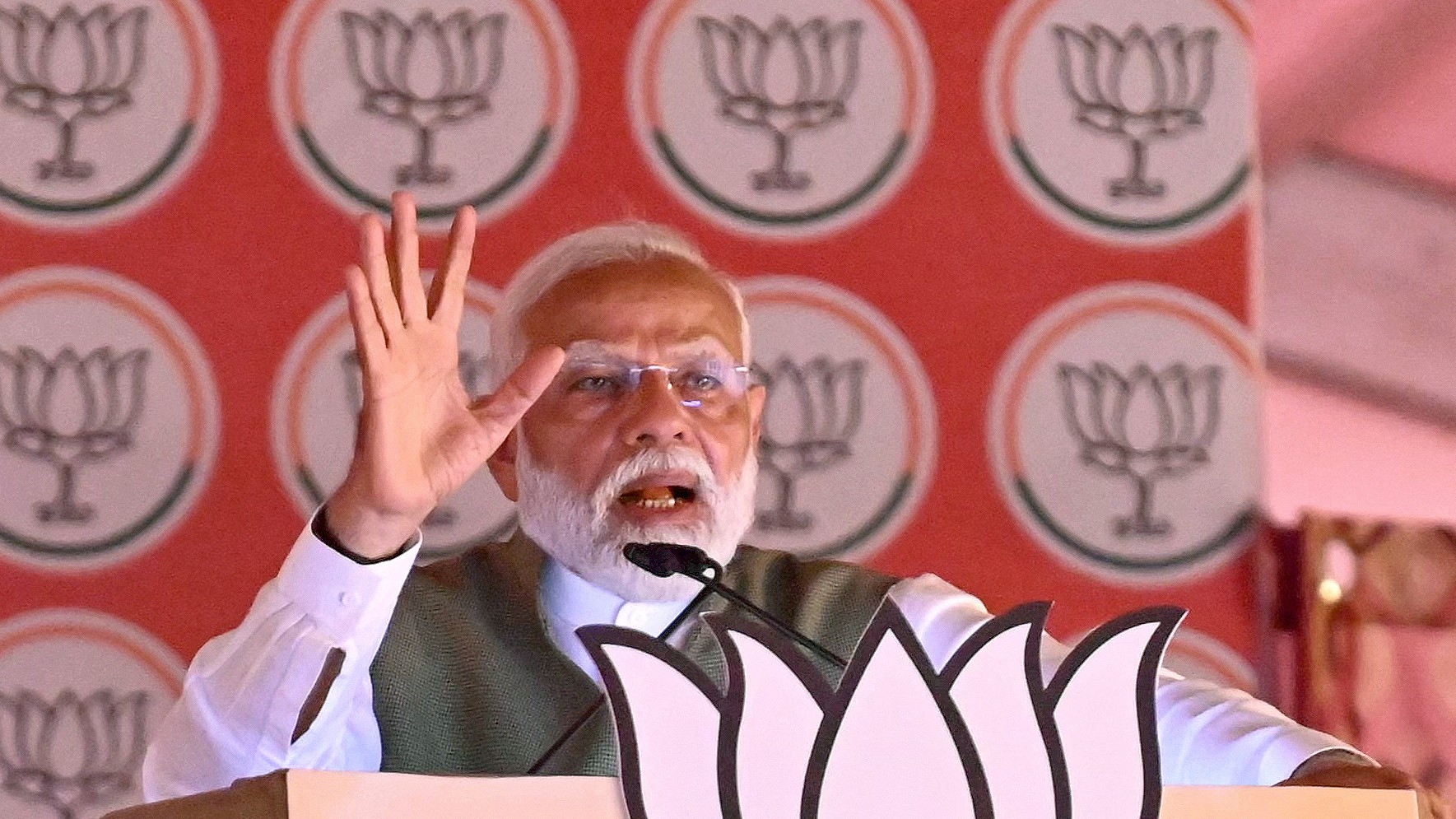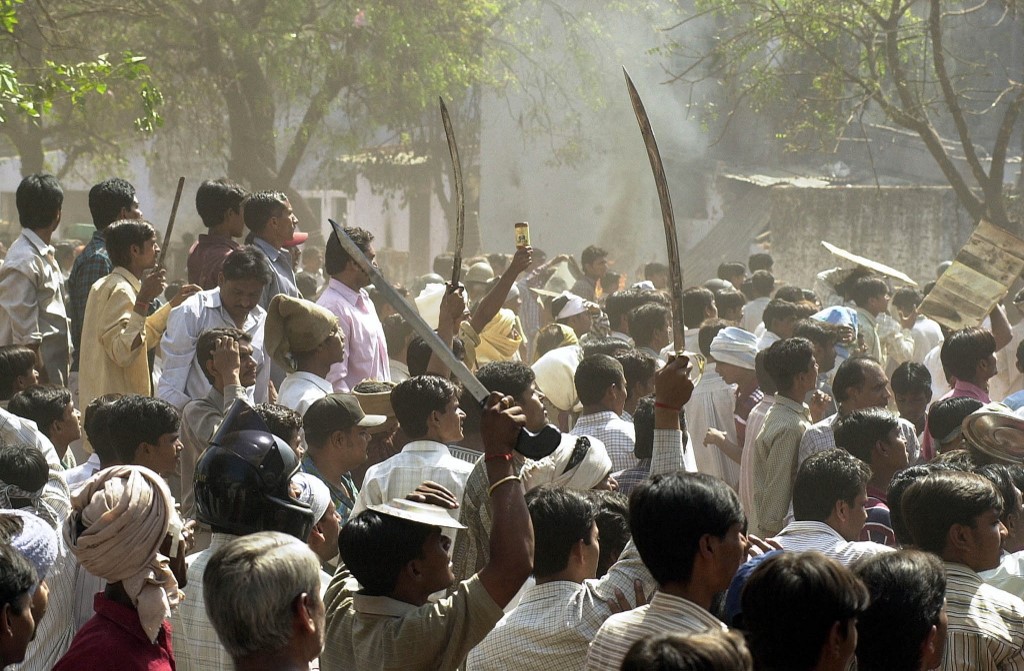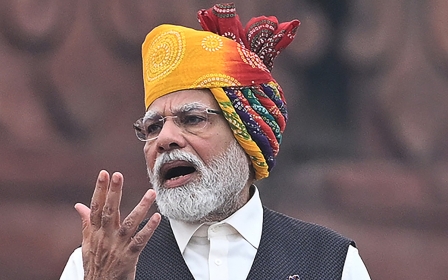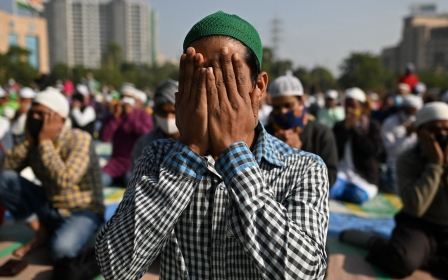India elections: How Modi's gruesome politics have always been hiding in plain sight

With 24 hours to go until the result of India's general election are announced, Prime Minister Nahendra Modi's Bharatiya Janata Party (BJP) looks on course for a resounding victory.
But one conclusion is already certain. Modi has fought the most sinister election campaign since Indian independence 78 years ago.
Key political opponents have been arrested. Congress, India’s main opposition party, which led India to independence, has had its bank accounts frozen. “This is a criminal action on the Congress party,” said former leader, Rahul Gandhi. “The idea that India is a democracy is a lie. There is no democracy in India today.”
Aakar Patel, the chair of Amnesty International’s India branch, said that, "the authorities have repeatedly exploited and weaponised various financial and terrorism laws to systematically crackdown on human rights defenders, activists, critics, non-profit organisations, journalists, students, academics and political opposition”.
Modi denounces Indian Muslims as "infiltrators". His Bharatiya Janata Party (BJP) has produced inflammatory campaign videos depicting Congress politicians stealing from non-Muslim Indians to give to Muslims.
New MEE newsletter: Jerusalem Dispatch
Sign up to get the latest insights and analysis on Israel-Palestine, alongside Turkey Unpacked and other MEE newsletters
Yet world leaders express no concern as Modi heads for his third election victory in a row.
And one which, many fear, will in effect abolish democracy in India.
'Hindu Rashtra'
Christophe Jaffrelot’s Gujarat Under Modi, a rigorous, deeply thoughtful and immensely significant book, demonstrates that anyone paying attention to Modi's record would have known exactly what India was getting when it elected him.
Jaffrelot sets out in meticulous detail how Modi’s 14 years as chief minister in the large western state of Gujarat from 2001 to 2014 was the crucible for the nightmare brand of politics that now dominates India.
Gujarat was the test laboratory for crafting a “Hindu Rashtra”, a Hindu nation. Jaffrelot demonstrates, drawing primarily upon newspaper articles, reports and books (all open sources) that Modi’s record in Gujarat was greatly impressive, revolutionary even - and completely gruesome.
Modi, a native Gujarati, was born in 1950 and hailed from a low caste of oil pressers. As a child he joined the Rashtriya Swayamsevak Sangh (RSS), the vast paramilitary Hindutva (Hindu nationalist) organisation modelled on 1930s European fascist movements.
By the 1970s, Modi was a full-time RSS worker and rising up the ranks in Gujarat.
The infamous 2002 Hindu-Muslim riots, greeted with horror in the West, made Modi’s career.
Without them, he would never have gained dominance and popularity in Gujarat. Modi won a by-election that allowed him to join the state assembly in February 2002. He was immediately - and unconventionally - installed as chief minister of the state.
Just three days later, on 27 February, 59 Hindus were killed on a train carrying mostly Hindutva activists. It has never been determined whether it was a pre-planned attack.
What followed was a prolonged spate of violence the likes of which Gujarat, no stranger to religious rioting, had never seen before. The vast majority of victims were Muslims.
The attackers “were perfectly disciplined and incredibly numerous” - they arrived in Muslim neighbourhoods “by the truckload” in “khaki shorts and a saffron headband”, bearing daggers, swords and gas cylinders, the book recounts.
Officially, 1,169 Muslims were killed, but NGOs often put the figure closer to 2,000.
Pre-planned violence
Jaffrelot destroys the myth that this was a random outbreak of violence. He shows it was carefully organised and premeditated. Muslim homes and businesses were targeted even when they bore Hindi names, “thereby proving that research had been undertaken beforehand to ascertain the owners’ identity”.
British officials who investigated the incident concluded that the violence had been pre-planned.
Often the police stood down, while elsewhere they actively aided and armed the attackers. Several top civil servants anonymously admitted that senior politicians were involved in the violence, too.
This included Modi himself, according to a senior police officer, Sanjiv Bhatt.
The Gujarat riots, which saw Modi banned from entering the US and the UK, propelled him to popularity
“The Chief Minister Shri Narendra Modi expressed the view that the emotions were running very high among the Hindus and it was imperative that they be allowed to vent out their anger,” Bhatt said.
No fewer than 527 mosques, Islamic schools, cemeteries and Muslim shrines were damaged or destroyed - including the tomb of Wali Gujarati, the founder of Urdu poetry.
The Gujarat riots, which saw Modi banned from entering the US and the UK, propelled him to popularity. He called for early state elections even while the violence continued to rage.
His overwhelming victory, Jaffrelot argues, proved to Modi that religious polarisation could help him politically. It was a formula Modi would later repeat, although in recent years in Modi’s India (with the exception of events such as the 2020 Delhi riots), mass violence has, as Jaffrelot writes, largely given way to mob lynchings.
This book does not blame anti-Muslim violence and discrimination on a small minority of Hindus.
“Few Hindus of Gujarat showed compassion after the 2002 violence,” Jaffrelot argues, noting that many “middle-class Hindus, in particular, approved of what had happened and continued to support those to whom the violence had been attributed”.
Promoted
Jaffrelot argued that the Modi government in Gujarat “pursued a strategy of politicisation of the police and the judiciary” so that the BJP could be spared any “meaningful enquiry” into what had happened.
Police officers who had shown “communal bias” were carefully promoted while more professional ones were sidelined. Meanwhile, members of the Vishwa Hindu Parishad (VHP), a militant Hindu nationalist organisation deeply implicated in the violence, were often the public prosecutors in the districts hardest hit by the riots.
There was no justice for the Muslims affected by the violence. In one district, Sabarkantha, the president of the district branch of the VHP, Bharat Bhatt, was made public prosecutor in 2003.
The other prosecutors were Hindu nationalists, too.
“Since the ruling party makes the appointments,” Bhatt said, “all of them are with us.”
He advised those accused of killing Muslims, who were of course his friends, “not to smile when they [would] see [him] in court”.
Then there was the case of Bilkis Yakub Rasool, a Muslim woman who was pregnant when she was gang-raped by her neighbours during the riots - after 15 of her family members, including her three-year-old daughter, were murdered.
First, the police refused to record her complaint of rape, Jaffrelot shows. Then, with NGO support, Bilkis succeeded in getting the Supreme Court of India to order the Gujarat government to open the case in 2003.
The police arrived at her house in the middle of the night, woke her up and took her “to return to the scene of the rape and murders to re-enact the events”. Eventually, 13 people were convicted and 11 were given life sentences.
De facto apartheid
Most surreally, over the years Modi orchestrated a series of bizarre “fake encounters” with Muslims who “allegedly intended to kill him” (the chief minister survived each supposed attack and used it to cultivate the image of himself as a Hindu saviour).
The great strength of Gujarat Under Modi is that it dispenses once and for all with the weak, flimsy narratives prevalent in the western press about Modi’s India: that Modi is alienating Muslim voters, stoking Islamophobia and encouraging a Hindu identity for the nation.
In major cities, meanwhile, such as Ahmedabad, Muslims were systematically forced into ghettos and prevented from living among Hindus
These narratives, Jaffrelot’s book suggests, so seriously understate the reality that they are, in fact, entirely false and damaging.
The reality for Muslims in Gujarat under Modi (to say nothing of the situation elsewhere in the country today) looked like de facto apartheid, although Jaffrelot does not use such a word.
But he does write that Muslims in Gujarat “were explicit victims of discrimination since funds and schemes (sometimes marked specifically for them by the central government) were not granted to them by the state government”.
When the central government allocated scholarships for Muslims, the Modi government simply refused to distribute them to Muslims in Gujarat.
In major cities, meanwhile, such as Ahmedabad, Muslims were systematically forced into ghettos and prevented from living among Hindus. Upper-caste Hindu culture was imposed on Gujarati society, while lower castes, Dalits (formerly the so-called “untouchables”) and Christians were carefully kept down.
Muslims, though, lived under a sort of mob rule.
'Love jihad'
Jaffrelot explains that the BJP created a new kind of state in Gujarat, which operated through militant Hindu nationalist vigilante groups that worked in collaboration with the police. As laws were passed to ban beef consumption, in line with upper-caste Hindu beliefs and traditions, these vigilantes roamed the streets of Gujarat’s cities to promote vegetarianism.
They were also tasked with ensuring young Hindu women were not engaging in any romantic liaisons with young Muslim men (“love jihad”) and making sure Hindus were not selling their houses to Muslims (“land jihad”). This was officially sanctioned gangsterism - a prototype of a Hindu supremacist “Hindu Rashtra”.
Modi also honed his economic approach in Gujarat. Gujaratis were traditionally famous for their entrepreneurship but Modi changed this, introducing mega projects handled by a few large companies.
The model this created, Jaffrelot shows, “generated growth but not development”. Industry provided few good jobs, while public health and education were neglected. Inequalities between villages and cities skyrocketed. So did disparities between social classes - and this has been a mainstay of BJP rule over all of India in the last several years. During 2017-2018, India saw its highest rate of joblessness in half a century. But billionaires close to Modi have thrived.
Finally, Jaffrelot brilliantly documents how Modi cultivated himself as a cult figure in Gujarat. His own world view was promoted aggressively in the state’s schools, with Nazism presented positively in school textbooks and Hitler portrayed as a strong and patriotic leader.
Modi essentially subjugated the state’s Hindutva apparatus to promote what is often dubbed “Moditva”.
Rather than showing deference to the ideological and organisational preferences of the RSS high command, Modi ruthlessly attacked Hindu nationalist figures he saw as a threat to his own power. The Gujarat government even destroyed Hindu temples, apparently to show the Vishwa Hindu Parishad its place in the new order of things.
Hindu nationalism in Gujarat, and later in India, thus became almost synonymous with Narendra Modi himself - presented as the “Emperor of Hindu hearts”. Modi’s core support came from the business community and the middle class.
'Crucible'
But for the first time, Modi also made Hindu nationalism appeal to a broader section of society, largely those known as part of the Other Backward Castes. A masterful political operator and populist, he made Hindutva more capacious and dynamic than it had ever been before.
In conclusion, Jaffrelot writes that, “Gujarat had been a Hindu nationalist test site, the crucible of a new form of Hindutva politics that was to unfold at the national level after 2014”.
His book, ultimately, analyses the making of Modi as a genius political operator but also casts sharp relief on what India was voting for - particularly, on what its middle classes and economic elites knew they were backing - when the country chose Modi’s BJP in 2014.
With the Modi government’s attacks on the press and cynical targeting of political opponents steadily escalating, the world continues to sit idly by and watch
And the world knew it, too: only when Modi became prime minister did the US and UK have to revoke their travel ban. Since then, the West has welcomed him with open arms. So too, of course, has much of the Muslim-majority world, including (significantly) the oil-rich states of the Gulf.
But the Modi they were embracing on account of India’s economic and geopolitical importance was not a firebrand with a record of distasteful rhetoric accused of alienating minorities. He was a politician with a record that can only be described as gruesome.
And now, during another election and with the Modi government’s attacks on the press and cynical targeting of political opponents steadily escalating, the world continues to sit idly by and watch.
This prodigiously significant book would not have been published by a writer based in India. Jaffrelot first submitted the manuscript over a decade ago, in late 2013 ahead of the 2014 elections in which Modi’s BJP came to power.
But lawyers considered the book “high risk” and asked him to cut so many passages that Jaffrelot decided to drop the project entirely.
It was only in 2020 that the author and his publisher, Hurst & Company, resolved to publish. The original manuscript was edited but not rewritten.
The timing is especially significant because the book shows “what was already known in 2013, one year before Indian voters decided to elect Narendra Modi”.
The views expressed in this article belong to the author and do not necessarily reflect the editorial policy of Middle East Eye.
Middle East Eye delivers independent and unrivalled coverage and analysis of the Middle East, North Africa and beyond. To learn more about republishing this content and the associated fees, please fill out this form. More about MEE can be found here.








